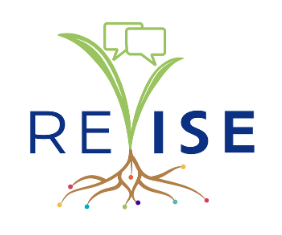
Janet Yang is an Associate Professor in the Department of Communication at the University at Buffalo whose research centers on the communication of risk information related to science, health, and environmental issues. She is particularly interested in how cognitive and affective evaluations of risk influence individuals’ decision making. You can watch this short video or download the full interview transcript below.
“What the information sufficiency principle suggests is that people are going to exert a lot of cognitive effort paying attention to a topic until they feel like ‘okay; what I know seems to be valid and seems to line up with what other people know or what the experts say.’”
– Janet Yang, Department of Communication, Associate Professor. University at Buffalo
2018 Interview Highlights:
Could you tell us a little bit about how your work addresses the concept of interest in science communication and education?
In the RISP model, the idea of interest is actually very much intertwined with motivation. The key idea is to propose a set of social context variables or psychological variables that lead some people to be more interested in certain risks or scientific topics than others. The theoretical concept at the core of this model, called the sufficiency principle, is that all of us have an innate need for information and to know that what we believe is accurate or valid. The sufficiency principle suggests that people want to get information or think through information to the point that they feel it’s sufficient to accomplish their processing or other goals. Their goal might be to satisfy their own cognitive need for information. For instance, some people just want to know more about everything there is. Or they might have social reasons for wanting information; maybe you want to know something really, really well so you can take better care of your family or talk more intelligently about the topic within your social circle.
Within the risk framework, risk perception is guaranteed to be a component. The model suggests that when people sense a greater risk about a potential hazard, they’re more likely to have a greater sufficiency threshold. For example, maybe I’m not personally interested in knowing more about HPV vaccination, but I have a kid who is about to be in the age group that needs to get a vaccination, so that would be a good reason for me to pay attention to this topic.
What does a typical information-seeking study or project look like? How do you operationalize the concepts and study them?
The central concept of information insufficiency is usually measured through survey studies. It’s actually a fairly simple set of measures. There are usually two items, one that asks participants or respondents to assess their existing knowledge about the topic. We usually ask people to self-report a number based on a 0 to 100 scale. Then we ask them exactly the same type of lead and ask them to tell us how much they would need to know about that particular topic, using the same scale. So it’s a two-item assessment strategy asking people about their subjective knowledge first and then asking about their subjective information sufficiency threshold. After controlling for current knowledge, basically what’s left over in terms of information insufficiency is what we would need in order to assess its correlation with other variables, such as information seeking and information processing.
How can people use the information from your research to make smarter communication decisions?
Here’s an example from another study I just conducted with a graduate student. She was studying e-cigarettes, which we know is a risk factor for adolescents especially. In this study, we tried to distinguish objective knowledge from subjective knowledge. What’s interesting is that we found current e-cigarette users or people who have tried them before definitely perceived themselves to have a very high level of subjective knowledge. But that perception was directly contradictory to their performance on real knowledge test questions. So people who think they know a lot might actually not know much at all. I think that could have practical implications for improving communication about science on risk topics. You need to trigger that sense of interest or get people to go, “oh, that’s a new angle I haven’t heard of,” and you need to understand what information insufficiency is present that could potentially be a useful tool to develop campaigns or informational materials to address those issues.
Overall, if you wanted to make somebody seek out information, what would you do?
There are a couple of things you can do. If it’s risk-related information, you might start by looking into risk perception in terms of severity, susceptibility, and emotional reactions to the risk topic. In addition, social influence as well as people’s reference groups are important. So I think those two key variables, risk perception and social factors, can induce greater insufficiency and make people want to seek out more information.
